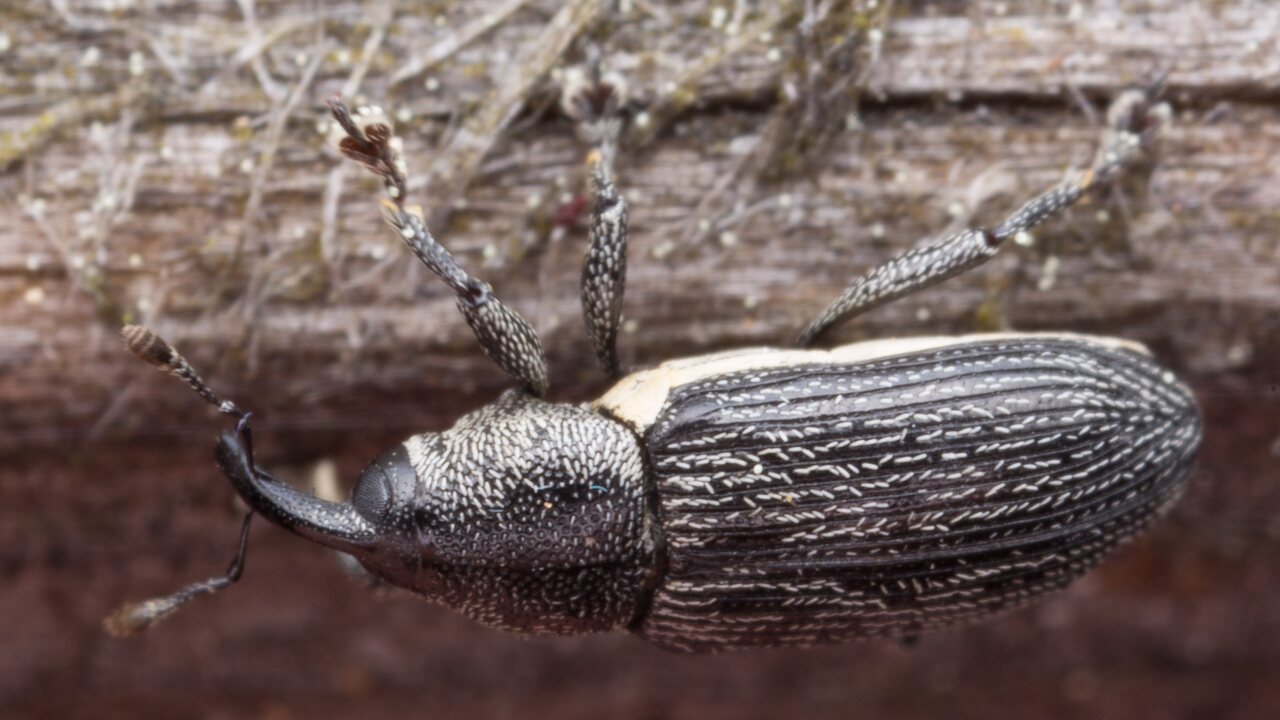
Limnobaris dolorosa · straubliukas
- Schwarzer Sumpfgrasrüssler
- suosarakkokärsäkäs
- strandsvartvivel
Limnobaris pilistriata?
https://www.ukbeetles.co.uk/limnobaris-dolorosa
This widespread and locally common Palaearctic species occurs throughout Europe except for the far north of Fennoscandia and extends south into Morocco and Algeria. The present species occurs in a wide range of wetland habitats; coastal beaches and dunes, salt marshes, peat bogs, fens, marshes, carr, permanently damp woodland, wet meadows and marginal habitats generally. Host plants include various sedges and rushes, Carex, Scirpus sylvaticus, Juncus effusus. Adults are active from March or April until September and have also been recorded in the winter, they reproduce early in the year and eggs are laid at the base of leaves. Larvae feed on foliage before entering the stems and boring down into the rhizomes where they will feed into the autumn, overwinter and complete their development the following spring, pupating within the host from March.
2.6-5.2mm. Entirely shiny black, the dorsal surface with pale grey or creamy pubescence (in fresh specimens), that on the elytra arranged in rows and usually clearly overlapping but this is variable and may be difficult to appreciate, the prosternum similarly pubescent but the rest of the thorax and the abdomen with dense creamy-white broad scales which obscure much of the cuticle, at least laterally. Very similar to L. t-album, in older specimens the scales may be missing from much of the dorsal surface and so identification may be difficult but males are easily assigned by the form of the aedeagus; here the median lobe is broader, curved laterally and bluntly-pointed, in t-album it is narrower, parallel-sided and continuously curved apically. Head transverse with weakly convex eyes that follow the outline and a long parallel-sided rostrum smoothly continued onto the frons; without a transverse impression at the base, vertex evenly convex and finely punctured. Antennae inserted a little beyond the middle of the rostrum; scape thickened towards the apex, funiculus 7-segmented and the club broadly-oval. Pronotum only slightly transverse (less so than in t-album), weakly contracted towards the base and strongly curved to a narrow anterior margin, surface evenly convex and rather strongly and densely punctured but for a smooth central longitudinal line. Prosternum without a rostral channel. Scutellum transverse, curved laterally and widely truncate. Elytra with prominent humeri, gently curved laterally or almost parallel-sided and completely covering the abdomen, striae well-impressed to the apex and interstices flat, each with a row of moderately strong punctures bearing a pale scale with reaches at least to the base of the following scale.
‥
0 comments
Add a comment